After a long time, we are finally back on track with our adventure stories. A lot has happened since the last time – the most important is the change of the location. So far we've been exploring Slovenia, now another country comes – Germany.
It was a perfect weather weekend, with sunshine and only a brief wind. Lately we have quite an interesting weather here, which is constantly changing. Funny, we have minutes of rain sometimes.
Today we drove from Hamburg city towards the south to the special place with unique vegetation. There is Heath growing everywhere on a big area. It is a typical Tundra landscape with typical plants and atmosphere. You can really feel that we are more in the north.
There are many walking paths in between the natural park, which allows people to choose different ways – maybe longer or less crowded. The best was the tiny white sand from the beach, which filled our shoes. We weren't upset about that – instead, we felt like we are walking on the northern beach.
We were lucky that we started just in the lunchtime, so we had some peace and time to relax the busy minds.
The walk on the edge of the Heide was even more beautiful, as their big, thick coniferous forest starts. The smell of the pine trees was in the air, mixed with earthy smells from mud pools which remained from the rain just days before.
In spring and summer you can find sheep wandering around the area, therefore this time we only observed birds flying around from tree to tree.
We can't wait for the Heath to start blooming with red, purple and pink flowers! We'll definitely come back to explore even more of this gorgeous place.
Here are some interning facts from the sign boards.
"A child of the glaciers:
The landscape of the Büsenbach Valley is the result of the Ice Age. Like giant conveyor belts, the glaciers of Scandinavia transported sand and stones to this place and deposited them on their retreat as gigantic mountains of debris.
For thousands of years, water, and wind shaped the relief of our landscape. Where water flowed off in large quantities, it left behind deep incisions in the terrain – the birth of the Büsenbach valley. The triumph of the heath After the ice age, our landscape resembled the Siberian tundra. Only sparse grasses, lichens, and a few low woody plants could thrive. With rising temperatures, the first forests developed about 10,000 years ago. First mostly birch and pine, later alder, oak and beech. Already in the June Stone Age, about 5,000 years ago, human settlement began. Intensive grazing with domestic animals and clearing destroyed the old forests and prevented the trees from growing back. On the now open, nutrient-poor sites, only very resistant plant species such as the broom heath and the prickly juniper were able to settle.
The regular removal of topsoil as bedding for the stables, called plagging, also promoted the spread of heath on the resulting raw soil.
Unpopular land For thousands of years, the heath thus shaped the appearance of the northern German landscape. It reached its greatest expansion in the 18th and early 19th centuries. At that time, the heaths of the Büsenbach valley and the neighboring Brunsberg were part of a single vast heath area between the villages of Wörme and Sprötze. At that time, however, the barren and almost treeless landscapes of the heath were still perceived as hostile and threatening.
Who would have thought it?
An important scientific reason for the protection of the Büsenbach valley were the juniper stands. Even today, the impressive woody plants from the cypress family characterize the area. It is remarkable that the junipers growing here represent the northernmost natural occurrence of this plant, as far as the Elbe.
Further north, there are only isolated or puny specimens.
Specimens occur. Perhaps you have noticed it? Already in the
Neighbouring, only two kilometres away nature reserve Brunsberg, the juniper is missing.
Machine use for nature:
As a purely cultivated landscape, heath needs continual care. While grazing with sheep only delays the rapid averaging of the heather, it must also be ploughed today at intervals of 20–30 years. What used to be back-breaking work for the heather farmers is now done by specially developed machines. The entire vegetation cover is removed almost down to the sand. On the exposed nutrient-poor mineral soils, only the broom heath finds ideal germination conditions – a vital heath area is created. A stream disappears a special feature of the Büsenbach valley is the brook's disappearance.
The Büsenbach rises in a small spring bog in the forest above the heath areas. It flows through the heath valley as a crystal-clear sandy brook and then seeps away completely in the moist subsoil in the southeast, directly above the car park. The water flows underground for several hundred meters and resurfaces as a trickle to flow into the Seeve at Holm." Quote end.
©️ Photographer, Nature kid’s , Wildlife, Explorer, Cinematography, video making, The Footprint Brand, Follow Us ❤️
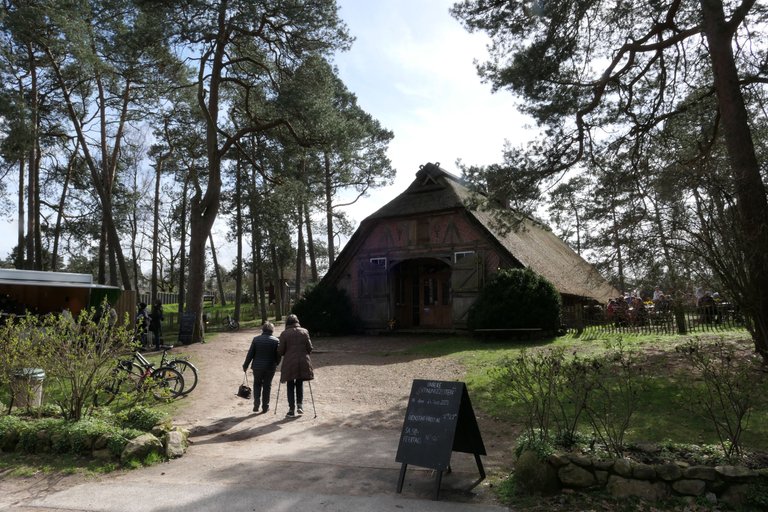
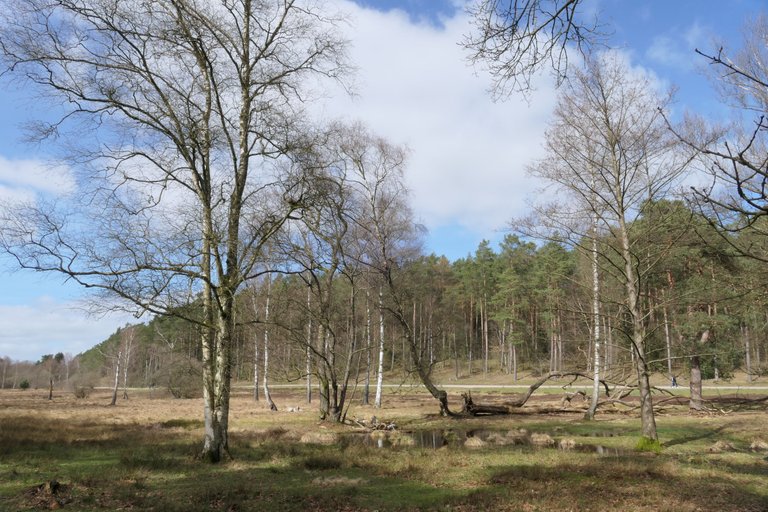

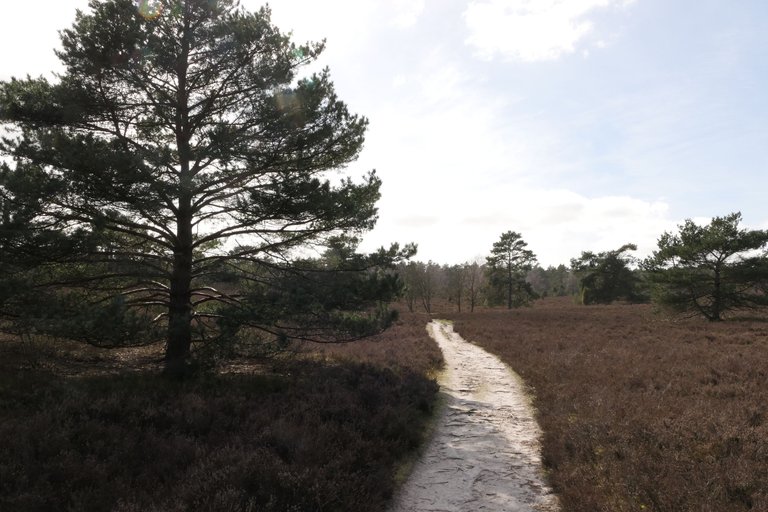
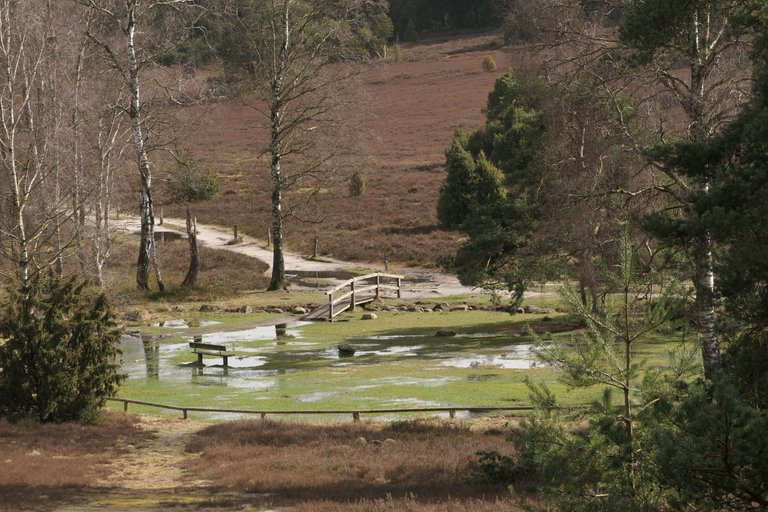
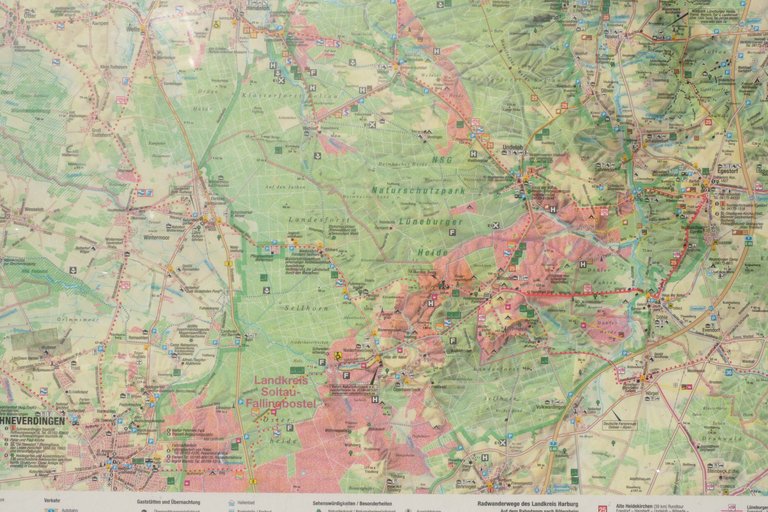
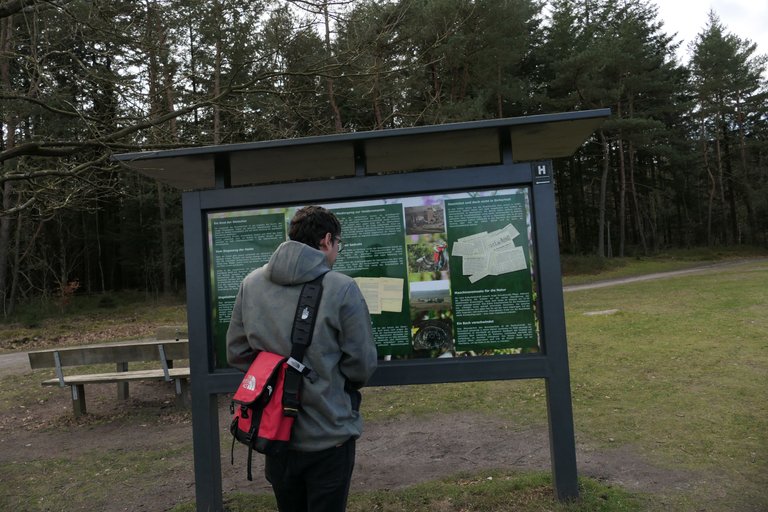
Such an interesting area even in this season, natures beauty still shines through and when the colors come out it will be even more special
a beautiful walk and such an interesting read
Thanks for joining the Wednesday, its always fun for me to visit the walks from all around the world, getting a feel for communities where people live and what they see on their daily walks
Thank you, @tattoodjay
I am as well exited already to see the place in some time again. We were really busy the last days, so there was no much time for making some grate memories and to share them here on HIVE.
Best regards 🤗